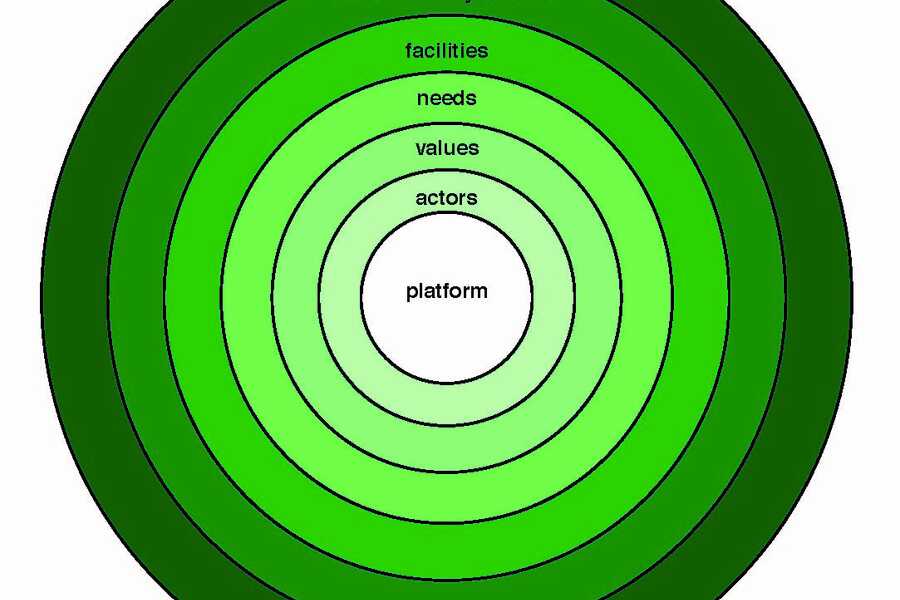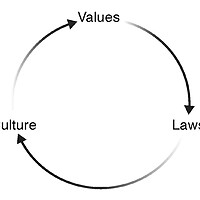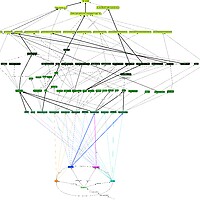What is the future sociotechnical sub-system and its functions?
The advantage of looking at socio-technical systems is that the co-evolution of technology and society, of form and function becomes the focus of attention. Dynamics in socio-technical systems involve a dynamic process of mutual adaptation and feedbacks between technology and user environment.(Geels 2004) Rapid population growth reflects the worldwide spread and success of modernization and industrialization. This has led to an unprecedented improvement in the material conditions of life of hundreds of millions of people, with great increases in income, life expectancy, health, education and wellbeing (Goklany, 2007).
The current sub system is already concerned with the future in a sustainable way. The municipality of Texel recognizes that global civilization is currently unsustainable. This is why it has the ambition to be 100% self sufficient by 2020. With this Texel exceeds the energy and climate goals of the Dutch government and the EU: Texel has chosen to play a leading role in technological and sustainable development. As Texel is an island, it is possible to clearly define this ambition. The island can exemplify a nation in miniature. Moreover, in order to meet the requirements of the set ambition, the municipality proposes a coherent energy program, with focus and policy aimed at achieving volume.(Leguijt, Benner et al. 2008)
“I am convinced it is possible. Without doubt, it is technically possible. A lot is dependent on the support of the population. If there is a will, there is a way” – Mw. Mr. C.J. Geldorp-Pantekoek, Mayor of Texel.
The mayor of Texel righteously points out the importance of the cooperation from the population of Texel. At this point, it is important to not to forget the visitors, as they cover almost half of the population during the year. In the Energy vision Texel and execution plan,CE Delft already proposes changes that need to be made in strategy and policy. The future subsystem will build on the set ambitions and aims to contribute to changing cultural values to sustainable ones. As sustainability depends on green, eco-efficient technology and a significant shift in cultural values, the two cannot be seen as separate entities.
Prevailing technologies
The technologies that are prevailing within the sociotechnical sub-system of health and happiness apply to the technological innovations regarding sustainability. Health and happiness has to do with certain values of a society and to what extent those values are met. These can be values regarding sustainability, amount of green, reputation, wealth, living space, income etc. Technologies related to these values are green energy, (sustainable) construction and modeling future cases. In the next chapter these values are described in more detail.
In order to make Texel to become a healthy and happy society, it is needed for the Texelaars to be aware of the technologies that are prevailing in reaching this goal. When the Texelaar knows how they can bring about this change towards health and happiness by using available technologies in an adequate way, the Texelaar will feel more involved in the process; this will empower them to contribute.
For the sustainability criteria aimed at reducing ecological footprint of Texel green technology is needed because conventional growth is leading to accelerating resource consumption, ecological damage and pollution:
Raw materials
The present industrial economy extracts raw materials from nature and turns them into products with ending economic value. Later the entire material chain is dumped back into the natural environment as waste and pollution. Therefor the system will focus on locally produced product with high levels of recycling of materials in closed loops (see Material and Waste subsystem).
Air quality
Pollution and persistent pollution of soil and atmosphere could be mitigated by designing technology that eliminates emissions and waste or at least reduces them to a minimal level and toxic pollution can be reduced be adjusted behavior avoiding the use of polluting fuels.
Healthy Food
Developing a regenerative approach to agriculture that recycles nutrients and avoids runoff minimizes the use of water, builds soil quality and uses natural methods to manage pests. The later ensure a sustainable supply of nutritious, uncontaminated and locally produced food.
Biodiversity
Our ecosystem presents to us available air, water and a stable climate. By developing infrastructure that has minimal impact on the biosphere and stimulate the use of bikes, the ecosystem can be preserved.
The knowledge and technology to achieve such goal is already exists and there is a political will from the municipality of Texel, what is still missing is a change in social priorities and values as enablers of the change.
Actors
The actors that need to be empowered are the young people, the average Texelaar, the entrepreneur and the visitor. This empowerment will be supported by actions of the government, institutions and companies offering the technologies needed.
The government wants the people to be healthy and happy because, for example, they want to win elections (at certain moments) and they want to keep the people satisfied to keep the system running and prevent protests. For the same reasons, they want the people to live a healthy and long life. Institutions govern the behavior of individuals within a community. That is why it is needed to be able to monitor behaviors and actions of the people in order to take actions in extreme circumstances.
Companies’ main goal is, generally, to have a high turnover. Therefore, the companies, which offer the services and technologies that prevail in this subsystem, benefit from changing values towards a more sustainable and green environment in order to have a healthy and happy life. Whilst other companies will either prevent this change or disempower the people in order to keep their business running or to avoid investments in R&D to keep up with changing values.
The later analysis indicates that the actors and the technologies are interrelated in order to the system to work properly. Furthermore, to work towards the sustainability goals of Texel while considering the health and happiness sustainability criteria, the current sub system needs to change. Green and eco-efficient technology and a significant change in cultural values is needed (Tibbs 2011). Therefore, a new socio technical sub-system was designed focused on the values of the actors who take part in the system to change towards common goals aiming towards sustainability. The value assessment in chapter 4 shows us which values of life satisfaction should change.
Technologies embedded in cultural behavior
The future socio-technical subsystem is designed as a platform, which functions as an institution monitor and showcases sustainable technological development and climate changes. The platform sets an example and directs, empowers, supports or coaches the actors to adjust their values. The action depends on the commitment and competence of the actor to engage in sustainable development (Motive 2014). The values represent the standards, which are given to the existence/quality of facilities that are needed. The next layer shows the facilities that are needed for the actors to lead a healthy and happy life according to their values such as schools, healthcare, sustainable housing, parks, ecological supermarkets, and social meeting places.
In this way the center, the monitoring/showcasing platform has a ‘Doppler’ effect on the values of the actors in order to empower the people to participate in sustainable development towards the set criteria to become a sustainable healthy and happy island, which can be self-sufficient by 2020:
- Well managed vegetation
- Halving exodus
- Social strength
- Low carbon footprint housing
- Lowering psychological health problems
- Increase local economy
- Maintaining air quality level
- Locally produced products
- Increase sustainable exercise by 50%
- Decrease in electricity consumption by 50%
- Decrease in fuel consumption by 25%
As is going to be described in chapter 4, the Happy Planet Index (created by Nic Marks) can be used to measure the success of the health and happiness subsystem. The sustainability criteria contribute to life expectancy, life satisfaction and decrease of the ecological footprint, which are the factors used to measure the Happy Planet Index = Life Satisfaction x Life Expectancy / Ecological Footprint. Adaptations to the measures were done to create the Happy Texel Index.
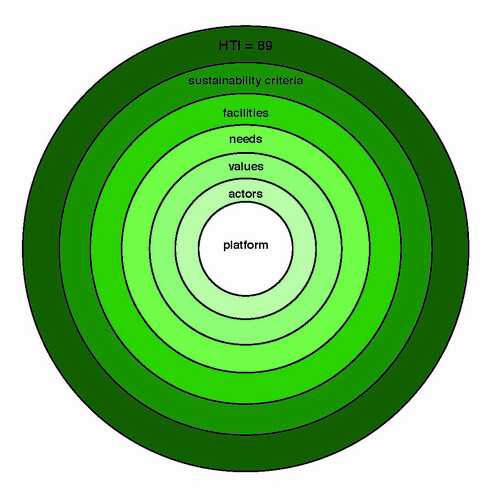
Figure 1. Overview of future sub-system
Interrelation of the elements
Long term vision of value change towards sustainability for better life quality.
Modernity has been a good progress for the society of Texel. People seem to want to expand modernity as far as possible. Technology and science have already experience rapid evolution, which have had good and bad impacts on the environment. Improvements in material conditions of life, with increasing wealth, life expectancy, health, education and wellbeing, haven taken place due to these developments. This results in values of life quality that are deeply rooted in the culture of the people.
To change such values will take a long time and need to be addressed at the root because people think much more psychologically about themselves and their lives. However, even though the people of Texel already give more value to sustainable development, it is still not enough to bring about the needed change (self-sufficiency by 2020) by maintaining their current state of health and happiness.
Currently, there is a shift towards post-materialism; this means people value their right to individual voice and influence, both politically and within organizations, emphasizing self-actualization and life quality (Tibbs 2011). The platform therefore, stands at the basis of these changing values, guiding them to reach the next step for valuing sustainable development. The platform influences the actors to value the sustainability criteria, because they know it will make them and future generations more healthy and happy.
Halving the exodus by creating job opportunities, providing better education and a strong community
At this moment, 3% of young people leave the island of Texel per year to seek a more thrilling life, better job opportunities and/or education (see chapter 2). When this problem will be addressed on a community level, by making the young people feel more involved in their community, the young people will feel more connected to their island.
Meeting places with exciting activities, where the young people are challenged and can engage in activities with the potential to contribute to their personal growth, are needed in the future sub-system. The quality of meeting places and public spaces have a strong influence on the attachment people will have on the place. The attachment and meaning of a green place can encourage individuals to actively protect and engage in pro-environmental behavior (Vaske and Korbin 2001). Well-managed vegetation creates a hospitable environment for people to gain attachment to places. (Carr, Francis et al. 1993)
Use of eco-efficient technologies for housing/hotels and green energy production.
While transformations in technologies are taking place making almost anything possible, society refuses to change, clinging to traditional ideas. Especially the construction industry has been lagging behind in technological development: 30% of the world’s carbon emissions come from the building industry. This is caused by inefficient building methods, use of material and low thermal capacity of post-war construction. Eco-efficient technological development can improve construction efficiency, materials insulating capacity resulting in energy savings.
Moreover, green energy production is strongly supported by the municipality for becoming self-sufficient in energy. The platform supports this by showcasing possibilities of engaging in green energy projects, giving a financial contribution, or applying the technologies in peoples homes. The design of the new subsystem is the basis for an encouraging scenario of a new culture, aiming at an economy based on clean green technology. It is a positive view on the future, which will undoubtedly encounter obstacles along the way but it provides a positive prospect for the future.
Job opportunities generated by increasing focus on technological development in the energy sector
The energy use in Texel amounts to around 1,5 PJ per year. The municipality of Texel predicts an increase of 50% of electricity consumption and 25% of fuel consumption, only the use of natural gas will decrease by 5%. Thus, the design of the future sub-system will primarily focus on providing technological innovation to produce the needed electricity and fuel.
Solar, wind and water energy can already be an answer to the electricity demand. TexelEnergie can expand, so more local energy can be produced at home and by start-up companies set up by entrepreneurs, generating more job opportunities and saving on energy costs on the long term for the people of Texel. Nevertheless, more innovation is still needed in a substitute for fuel. Technological development in biomass fuel is experiencing a kick-start but still has many obstacles to overcome. The platform aims to make everyone, but primarily young people and entrepreneurs, more aware of the consequences of using fossil fuels, encouraging them to find alternative technologies of fuel generation and transportation technologies to decrease the concentration of carbon dioxide in the atmosphere.
Although Texel has a relatively good air quality compared to the rest of the Netherlands, Texel wants to be an example for the EU by becoming a sustainable island. Texel also experiences benefits when the EU (and the rest of the world) accelerates their measures against climate change, because the increase in concentration of carbon dioxide will have detrimental effects on the island of Texel. These effects, such as rising temperature, rising sea levels and increasing humidity, can have large effects on the biosphere of Texel, resulting in a decrease in visitors coming to Texel for holidays or leisure. (Conrady and Bakan 2008)
Green areas effects on body health/psychological health
Texel has 80% of green areas, which is relatively high compared to other areas of the Netherlands. However, what is more important to know is whether these green areas are accessible, visible and well-managed, as nobody will experience any benefits from a natural park that is in decline. Seeing green areas can increase the ability to concentrate and can improve work performances and decrease stress levels and illness. Green spaces encourage people to engage in outdoor exercise and social outdoor activities.
Having quality landscaping and well-managed vegetation has good effects on health and happiness and is, therefore, a good investment strategy for the municipality (Wolf and Flora 2010). Possible projects, which can be encouraged and supported by the platform, can be: creating inspiring natural environments in office and school buildings, develop green areas around cycling and walking pathways. In this way, the future sub-system encourages the municipality to improve public spaces to become more green and well-managed.
The platform will present the results of the activities, projects and behavioral changes regarding sustainable development in a yearly event. This event is an Energy Marathon, the participants of the Energy Marathon will produce energy while running on an energy generative platform made by entrepreneurs and young people of Texel. A scoreboard will show scores of the life satisfaction and life expectancy of the people opposed to the ecological footprint resulting in the Happy Texel Index. Every year, participating people will become more aware of their influence on the environment and the influence of this on their own health and happiness.
Rules and regulations influence on cultural values
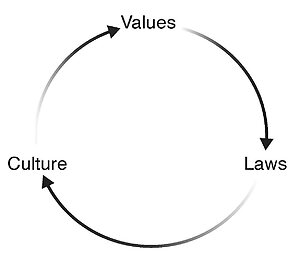 The future sub-system is a strategy to maintain support mechanisms towards behavior that encourages innovation and open communication. Values that play a role in creativity and sustainable innovation can either inhibit or encourage it, depending on how these values influence individual and community behavior (Martins and Terblanche 2003). As mentioned earlier, cultures represent countries’ deeply rooted values. Culture reflects the moral and ethical beliefs and standards that determine how people should behave and interact with each other. Cultural norms and values are shared systems of beliefs and practices that are passed down through generations and characterize a cultural group.
The future sub-system is a strategy to maintain support mechanisms towards behavior that encourages innovation and open communication. Values that play a role in creativity and sustainable innovation can either inhibit or encourage it, depending on how these values influence individual and community behavior (Martins and Terblanche 2003). As mentioned earlier, cultures represent countries’ deeply rooted values. Culture reflects the moral and ethical beliefs and standards that determine how people should behave and interact with each other. Cultural norms and values are shared systems of beliefs and practices that are passed down through generations and characterize a cultural group.
Figure 2. Interrelation of values and laws
Norms cultivate reliable guidelines for daily living and contribute to the health and well-being of a culture. They act as prescriptions for correct and moral behavior, lend meaning and coherence to life, and provide a means of achieving a sense of integrity, safety, and belonging. These normative beliefs, together with related cultural values and rituals, impose a sense of order and control on aspects of life that might otherwise appear chaotic or unpredictable. (Boundless 2014) The future sub-system addresses these norms and values in a way that it is coherence with current cultural values regarding climate change. The system will support, encourage and influence their values towards becoming more sustainable on the way to health and happiness. These values have influence on laws, but laws in turn have the power to change culture (Harwick 2014). When a government sets up laws that neglect the values of a culture this can lead to a negative public opinion and legal issues. Therefore, in the future sub-system, it is of utmost importance that the municipality of Texel is capable of monitoring the changing values of the people of Texel in order to maintain their authority and ethical success. (Chmielewski 2004)
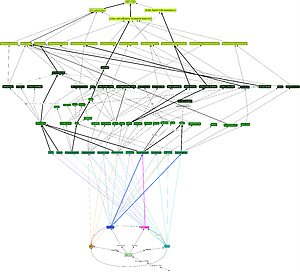
Figure 3. The design of the future sub-system
References
Boundless (2014, 18 november 2014). "Culture and Ethics." Boundless Management. Retrieved 24 december 2014, from https://http://www.boundless.com/management/textbooks/boundless-management-textbook/ethics-in-business-13/ethics-an-overview-95/culture-and-ethics-448-8309/.
Carr, S., et al. (1993). Public Space. Cambridge, Cambridge Universtiy Press.
Chmielewski, C. (2004). "The Importance of Values and Culture in Ethical Decision Making." Retrieved 24 december 2014, from http://www.nacada.ksu.edu/Resources/Clearinghouse/View-Articles/Values-and-culture-in-ethical-decision-making.aspx.
Conrady, R. and S. Bakan (2008). Climate Change and Its Impact on the Tourism Industry, Springer Berlin Heidelberg.
Geels, F. W. (2004). From sectoral systems of innovation to socio-technical systems. Elsevier. Eindhoven.
Harwick, C. (2014). "Culture and Laws." Retrieved 24 december 2014, 2014, from http://thri.ca/blog/culture-and-laws/.
Leguijt, C., et al. (2008). "Energievisie Texel en uitvoeringsplan 2008-2011."
Martins, E. C. and F. Terblanche (2003). "Building organisational culture that stimulates creativity and innovation." European Journal of Innovation Management 6(1): 64-74.
Motive (2014). Leadership styles in daily life. Delft, Motive.
Tibbs, H. (2011). "Changing Cultural Values and the Transistion to Sustainability." Journal of Future Studies 15(3): 13-32.
Vaske, J. J. and K. C. Korbin (2001). "Place Attachment and Environmentally Responsible Behavior." The Journal of Environmental Education 32(4): 16-21.
Wolf, K. L. and K. Flora (2010). "Mental Health and Function - A Literature Review. In: Green Cities: Good Health." Retrieved 24 december 2014, 2014, from http://depts.washington.edu.

